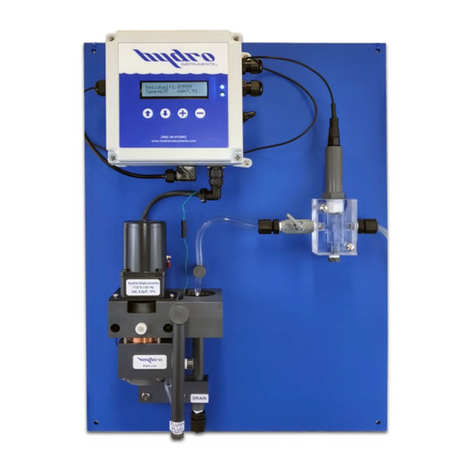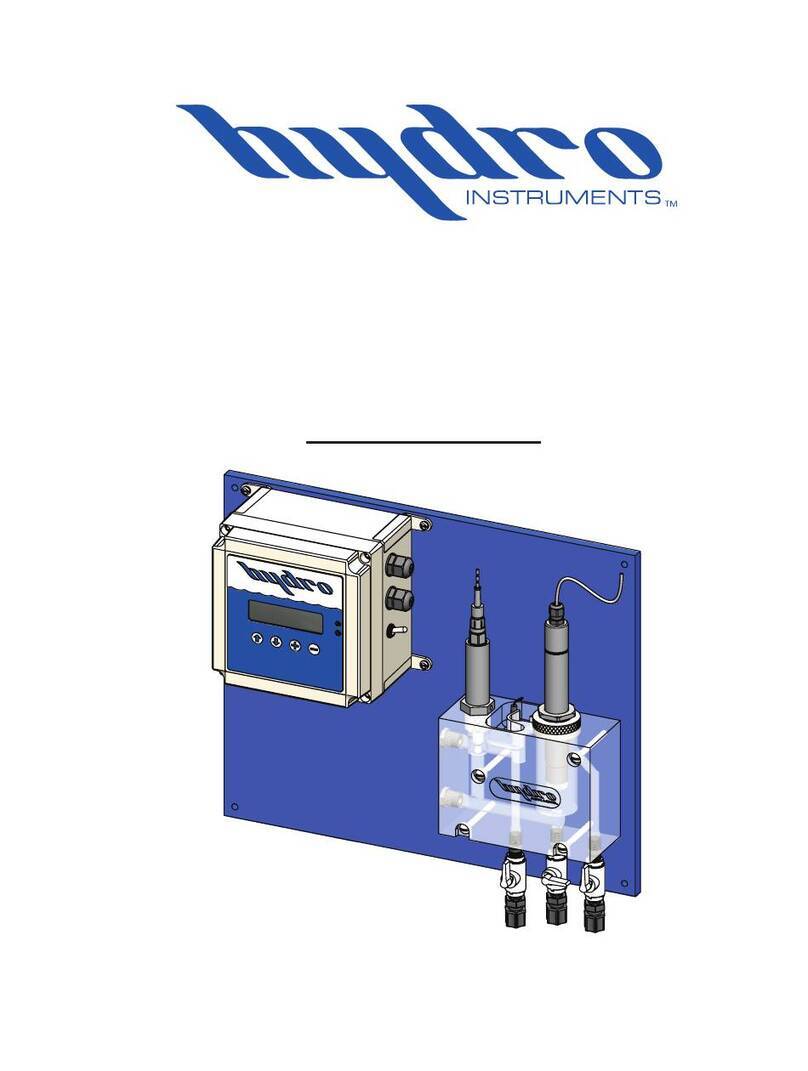
8
6. Damaged Circuit Board: The circuit boards can be damaged if high voltage is
connected to the wrong terminals, by lightning, other power surges, or by corrosion. If
you believe that the circuit board is damaged, then contact the factory and your local
sales representative.
7. Damaged Power Supply Board: The power supply board accepts AC power (110-240
V at 50-60 Hz) and provides 24 VDC power to the main circuit board. If the main circuit
board does not have power, then check the DC voltage on the output pins of the power
supply board. If it has A/C power coming in, but is not putting out 24 VDC, then it either
has a blown fuse or is damaged and requires replacement.
8. Blown Fuse: If the power supply board is not putting out 24 VDC, then always check to
see if the fuse is blown and replace if necessary.
IV. OPTIONAL DATA LOGGER
1. Description: When enabled in the software, the data logger records the measured NTU of
each attached turbidity sensor at a selectable frequency. This data is recorded on the Micro
SDHC memory card and can be retrieved using any text-reading program. The Micro SDHC
memory card is installed in the slot on the MB220 board as indicated on Figure 3 of this
manual. To use the data logger the controller must be provided with the MJ500 Real-Time
Clock board (which mounts directly on the MB220 board as shown on Figure 3).
2. Operation: To enable, enter the configuration menu on the monitor and select the option
“DL”. The first menu option that appears will be the On/Offmenu. The menus which follow
allow for adjustment of the data logger frequency and for changes to the clock (date and
time). See figure 2.
a. Frequency: The frequency is the time interval between data recordings. The fre-
quency is adjustable in seconds, with a minimum setting of 5 seconds.
b. Data Logger Clock: The clock is factory-set before shipment. However, because
the clock is set on Eastern Standard time it may be necessary to change the date and
time upon start-up.
3. Stored Data Files: The data will be written to text files on the Micro SDHC memory card.
The formatting and handling of these files is as described below:
a. File Format: The following is an example data file to illustrate the format used. As
you can see, there is a three line header for each file. The fourth and fifth lines are
headers for the data. You will see that each header and data entry is delimited by a
comma.
b. File Name: Each data file will be named according to the date on which it was
created. For example if created on May 24, 2022, the file name would be May24_22.txt
i. If the Micro SDHC memory card already has a file started earlier on the same day,
then data will be written onto the existing file.
ii. The text files are limited to 5 MB. Once this limit has been reached, a new file will
automatically be created to allow data to continue to be written.






























